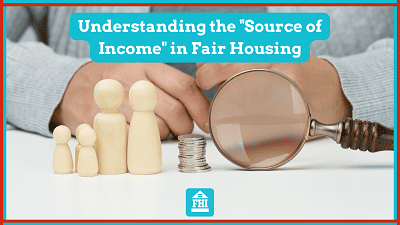Understanding the “Source of Income” in Fair Housing

Defining “Source of Income”
In the realm of housing discrimination, the “Source of Income” pertains to the origin of a resident’s lawful earnings or funds. This can include earnings from employment, pensions, or other regular payments, but notably, it frequently involves rental assistance programs or housing subsidies such as Section 8.
Although it’s not yet a federal mandate, many state and local housing laws and ordinances have recognized and added it as a protected category.
Implications for Property Managers and Landlords
For those managing federally assisted housing programs, such as 202, 811, or tax credit properties, it’s often mandatory to consider housing subsidies as a valid source of income. This means refusing a tenant on the grounds of them receiving rental aid can have legal repercussions.
However, if a property doesn’t fall under these categories, it’s paramount to delve into local city or county regulations. A deep understanding of local ordinances is essential to ascertain whether “Source of Income” is protected in your jurisdiction.
Resident Income Screening in the Context of “Source of Income”
When screening potential residents, many property managers and landlords have set income criteria that applicants must meet. When “Source of Income” is protected, this screening process requires nuanced handling. The focus should primarily be on the tenant-paid portion of the rent. Managers need to:
- Ascertain the amount of rental assistance the applicant receives.
- Determine the gap between the assistance and the market rent of the property.
Upon obtaining these numbers, they can be juxtaposed against the property’s income standards to ascertain eligibility.
The Rise of “Source of Income” as a Protected Class
Recent years have witnessed a surge in advocacy for “Source of Income” protection. Various legislative initiatives have been proposed to elevate its status at the federal level. This momentum is largely attributed to the pressing challenges of housing affordability and accessibility. Incorporating “Source of Income” as a protected category can alleviate these challenges, enabling a broader segment of the population to improve their housing conditions.
In Conclusion
The intricacies of housing laws go beyond federal mandates. For property management professionals, staying updated with state and local ordinances, along with training, is as crucial as understanding federal regulations. The categorization and acceptance of various income sources can profoundly impact resident selection and rental operations, underlining the importance of comprehensive knowledge in this domain.















 Accessibility
Accessibility